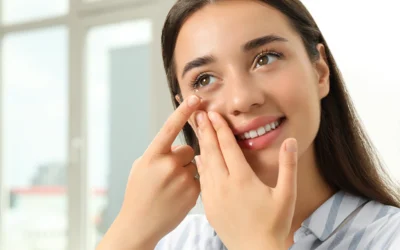February is Age-related Macular Degeneration Awareness Month. Age-related macular degeneration or AMD affects millions of people worldwide and can result in severe vision loss. Understanding this condition and its signs and risk factors will help you better manage your health and seek out treatment if necessary. Keep reading to learn all about this eye disease, including its signs, risk factors, and treatments available.
What is AMD?
Age-related macular degeneration (AMD) is an eye disease that affects a person’s central vision. It happens when aging causes damage to the macula, the part of the retina responsible for sharp, clear central vision.
Symptoms of AMD
The most common symptom of AMD is blurry central vision that gradually worsens over time. Other symptoms include seeing distorted or wavy lines when looking at straight lines, difficulty recognizing faces, and dark spots in your field of vision. People who have AMD may have trouble reading, driving, or doing other activities that require clear central vision. If you experience any of these symptoms, be sure to visit your eye doctor right away for an eye exam.
Risk factors for AMD
Age is the strongest risk factor for AMD, but several other factors can increase your risk:
- Smoking
- A family history of AMD
- Race (Caucasians are more likely to develop AMD)
- Gender (women are more susceptible to AMD than men)
- Certain medical conditions like high blood pressure and hypertension
- Obesity
- Exposure to UV light from tanning beds or sunlight without adequate eye protection
Types of AMD
There are two main types of AMD: dry and wet. In the dry type, yellowish deposits called drusen build up in the macula and cause damage. Dry AMD is much more common than the wet form and develops gradually over time. Wet AMD occurs when abnormal blood vessels behind the retina start to leak fluid into the macula. While less common, the wet form is more severe and usually causes faster vision loss.
Treatment options for AMD
Treatment for AMD depends on the type of AMD and the severity. Although there is currently no treatment for dry AMD, lifestyle changes, such as eating healthier and quitting smoking, may slow down the progression of the disease. Wet AMD can be treated if caught early enough, and the most common treatment is anti-VEGF injections. Other ways to treat wet AMD include laser surgery and photodynamic therapy.
While there is no cure for AMD, early detection combined with timely treatment and lifestyle modifications can help preserve your sight so you can continue living life to its fullest! If you have any symptoms of AMD, be sure to contact our office to schedule an appointment.



